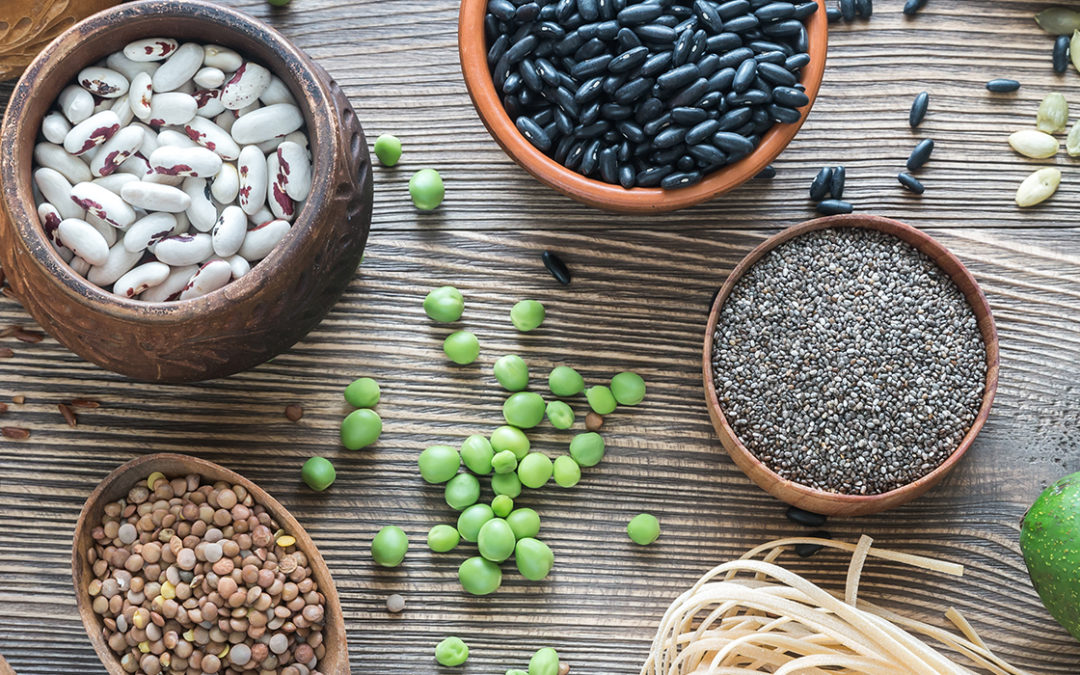Getting enough fibre is something people don’t think about all that often. Let’s face it: Most of us haven’t a clue how many grams of fibre we’re taking in on a typical day.
And guess what? We’re not even close to meeting the recommended intakes of 20-35 grams a day for healthy adults.
- 25 daily grams for those eating 2,000 calories per day
- 30 grams for 2,500 calories a day.
The mean fibre intake in the U.K. is 14-15 grams a day.
We get fibre from unprocessed foods such as fruits, vegetables, whole grains, nuts, seeds, and beans. Most people aren’t exactly loading their plates with these items. You’d be hard pressed to find any of them in your average takeaway.
Consumption of food prepared away from home increased from 18% of our total calories to 32% of total calories between 1977 and 1996. All this “away” food not only has more calories and fat per meal than home- prepared foods, but also less fibre (on a per-calorie basis).
WHY DO WE NEED FIBRE?
It’s hard to believe that something we can’t even digest can be so good for us! A higher- fibre diet has been shown to lower blood cholesterol levels and prevent constipation.
High-fibre foods also tend to contain more nutrients and fewer calories, are digested more slowly, and help us feel full sooner.
But that’s only the beginning of fibre’s story. Here’s what else it may do for us:
- The more gummy, gelatinous type of fibre (like that found in oats, breads, cereals, and the inside of kidney beans) lowers blood cholesterol levels and helps normalize blood glucose and insulin levels (important in preventing heart disease and type 2 diabetes).
- The roughage type of fibre (like that found in wheat bran, strawberry seeds, and apple and bean skins) helps move things along in the large intestine. This promotes regular bowel movements and prevents constipation.
- A recent review of studies indicated that a higher- carb, low-fat diet may be beneficial for treating people with syndrome X, an insulin- resistant condition linked to obesity.
- Fibre-rich foods help prevent diverticulosis. They help prevent the formation of intestinal pouches (diverticula) by contributing bulk in the colon, so that less forceful contractions are needed to move things along.
- Fibre can reduce your risk of colorectal cancer. If people who normally get little fibre suddenly doubled their intake through wiser food choices, they could lower their risk of colon cancer by 40%, according to research involving data collected from 10 European countries.
- Fibre (from whole grains, vegetables, and beans) may have protective effects against breast cancer.
- High-fibre diets may help slow the epidemic of type 2 diabetes in the world in part by enhancing insulin sensitivity. But it may not just be all about the fibre in this case; high-fibre foods also happen to be major sources of important micronutrients. That’s why you want to concentrate on whole plant foods, not just fibre pills or supplements.
FACTS ABOUT FIBRE
- There are two types of fibre: soluble fibre, which dissolves in water, and insoluble fibre, which does not dissolve in water.
- The digestive tract is an amazing 28 feet long. Fibre helps move waste along this large muscle.
- Fibre is found only in plants. Fibre is found naturally in foods such as beans, seeds, nuts, vegetables, fruits, and whole grains, these are foods that all grow from plants.
- Research shows that fibre can lower the risk of prostate cancer progression and decrease levels of testosterone, which helps decrease tumour growth.
- If people who normally had low fibre suddenly doubled their intake, they could lower their risk of colon cancer by 40%.
- Cooking does not remove the fibre from food. Additionally, drying food does not remove fibre from food.
- The more fibre a person includes in his or her diet, the more water he or she will need to keep the fibre moving through the digestive tract.
- Research indicates that fibre has protective effects against cancer, diabetes, constipation, high blood pressure, obesity, and cardiovascular disease.
- Symptoms of low fibre intake include unhealthy bowel movements, such as going less than two or three times a day. Additionally, a bowel movement should never hurt, cause haemorrhoids, or lead to bleeding. cause haemorrhoids, or lead to bleeding.
- Fibre fills you up! Fibre takes up more space in your stomach and small intestine so you may eat less and feel full longer – a real benefit if you are trying to lose weight.

